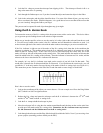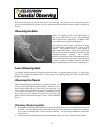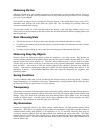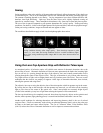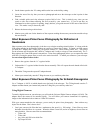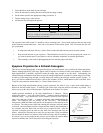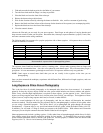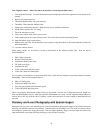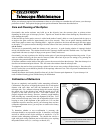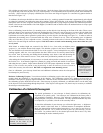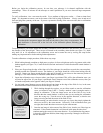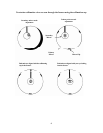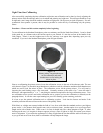39
Note: Digital Cameras – follow the camera instructions on focusing and shutter data.
1. Polar align the telescope. For more information on polar aligning see the Polar Alignment section earlier in the
manual.
2. Remove all visual accessories.
3. Thread the Radial Guider onto your telescope.
4. Thread the T-Ring onto the Radial Guider.
5. Mount your camera body onto the T-Ring the same as you would any other lens.
6. Set the shutter speed to the "B" setting.
7. Focus the telescope on a star.
8. Center your subject in the field of your camera.
9. Find a suitable guide star in the telescope field. This can be the most time consuming process.
10. Open the shutter using a cable release.
11. Monitor your guide star for the duration of the exposure using the buttons on the hand controller to make the
needed corrections.
12. Close the camera's shutter.
When getting started, use fast films to record as much detail in the shortest possible time. Here are proven
recommendations:
• Ektar 1000 (color print)
• Konica 3200 (color print)
• Fujichrome 1600D (color slide)
• 3M 1000 (color slide)
• Scotchchrome 400
• T-Max 3200 (black and white print)
• T-Max 400 (black and white print)
As you perfect your technique, try specialized films, that is films that are designed or specially treated for celestial
photography. Here are some popular choices:
• Ektar 125 (color print)
• Fujichrome 100D (color slide)
• Tech Pan, gas hypered (black and white print)
• T-Max 400 (black and white print)
There is no exposure determination table to help you get started. The best way to determine exposure length is to
look at published photos and see what film exposure combinations were used. Or take unguided sample photos of
various parts of the sky while the drive is running. Always take exposures of various lengths to determine the best
exposure
P
P
l
l
a
a
n
n
e
e
t
t
a
a
r
r
y
y
a
a
n
n
d
d
L
L
u
u
n
n
a
a
r
r
P
P
h
h
o
o
t
t
o
o
g
g
r
r
a
a
p
p
h
h
y
y
w
w
i
i
t
t
h
h
S
S
p
p
e
e
c
c
i
i
a
a
l
l
I
I
m
m
a
a
g
g
e
e
r
r
s
s
During the last few years a new technology has evolved which makes taking superb images of the planets and moon
relatively easy and the results are truly amazing. Celestron offers the NexImage (# 93712) which is a special camera
and included is software for image processing. You can capture planetary mages your first night out which rivals
what professionals were doing with large telescopes just a few short years ago.



